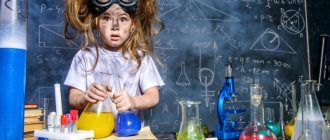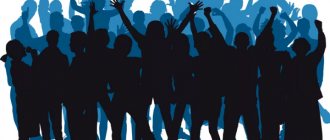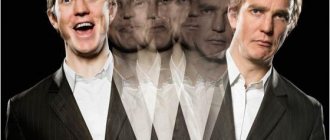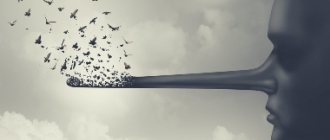How to learn to understand people based on their gestures and facial expressions? The psychology of facial expressions and gestures provides the answer to this question.
By studying and understanding this topic, you can ensure the absence of secrets and hidden meanings in conversations with others and learn to read people like an open book.
Do you agree that this ability is very useful?
Terms and concepts of the section on facial expressions and gestures
Gesticulation refrain, dictionary of symbols of psychoanatomy, ergonomics of gestures. What it is?
These phrases are difficult to understand for people who are encountering the topic of gestures and facial expressions for the first time. Simply put, these are the components of this branch of psychology, which allow us to understand facial expressions and gestures at a more detailed level than “his ears are burning, which means he’s lying.” Everything is much deeper and more serious than it might seem at first glance.
Gestural refrain –
it is a repeated gesture that always has the same meaning.
Here's an example. Crossed arms. If the right one lies on top of the left one, it means resentment. If it’s the other way around, it’s a defensive position.
The dictionary of psychoanatomy symbolism is a kind of decoding of sign language. Based on it, you can find out what certain gestures mean in the current situation. This section is considered purely on specific examples, since in different situations, the same gesture can be interpreted differently. Ergonomics of facial expressions and gestures is a section that describes the ability to adapt body language to solve specific problems. For example, influence the human psyche with the help of positive beliefs transmitted through gestures.
Learning gesture ergonomics is a great way to learn how to communicate more productively and effectively. It makes it possible to influence a person with gestures and facial expressions, which subconsciously evoke positive emotions in that person.
Fraudsters take advantage of this. For example, in order to win a person’s favor, a fraudster can touch his hand while telling an anecdote or some pleasant and funny story. Thus, the human brain begins to react positively to this gesture.
Then, when it comes to “turning off” the scam itself, the scammer accidentally touches the person’s hand again, awakening relaxation and positivity in his mind. This makes it easier to commit fraud, because a relaxed person will not begin to suspect something. His brain is deceived by psychology.
What information does gesture convey?
Despite the fact that research on the topic of nonverbal communication has been conducted for several years, the meaning of studying gestures remains unclear to most people. Why do you need to study it?
- Gestures complement information received verbally. With their help, you can understand the emotional state of the interlocutor, his attitude towards the participants or the very topic of the conversation.
- Using gestures, you can determine how emotionally close the issues being discussed are to a person.
- Usually the gesture appears before the phrase, so you can predict what the person wants to say.
What does understanding facial expressions and gestures provide?
A short list of advantages:
- Active brain function.
You need to remember a bunch of gestures and movements that indicate a specific meaning. For example, if during a dialogue the interlocutor scratches the back of his head, this means that he is not confident in your words and is questioning them. There are many such examples that can be given, and most of them need to be kept in mind at all times.
- Ability to adapt and change the situation.
When you know more than you are told, you can more often find the right solutions in various situations, lead your interlocutor to something, or get answers where he does not even say them.
- Understanding a person's negative motivations.
Knowledge of this topic will give you the opportunity to protect yourself from lies, envy, unfriendliness, etc.
- Understanding the inner world of the interlocutor.
The correct interpretation of facial expressions and gestures not only makes it possible to look into the soul, finding out all the secrets of the interlocutor, but also to understand that he needs help, even though he is trying to hide it. In this case, you can try to find the right words and try to figure out the problem together.
- Developing the ability to notice the smallest details.
Without this ability, it is impossible to interpret the current picture from facial expressions and gestures. One unnoticed gesture can radically change the entire meaning of the signals given by the body. Therefore, if we want to correctly interpret another person's body language, we need to be more attentive and sensitive to little things.
- Self-development.
Self-development is an additional bonus when studying the psychology of facial expressions and gestures. A person learns to know both himself and those around him, learns something deep, and draws something useful for himself.
The market for emotion recognition technologies - what's wrong with it?
He is, but he is young, he still has everything ahead of him.
Now the emotion detection market is experiencing a boom and, according to Western experts, by 2021 it will grow, according to various estimates, from $19 billion to $37 billion.
Thus, according to the influential agency MarketsandMarkets, the global volume of the emotions market in 2021 amounted to $6.72 billion, and it is expected that by the mid-2020s.
it will increase to $36.07 billion. The market for emotional technologies is not monopolized. There is a place here for corporations, laboratories, and startups. Moreover, it is normal market practice: corporations integrate the developments of smaller companies into their solutions. Emotional and behavioral technologies are in demand in various fields, including medicine.
Turning to foreign experience, let us remember how Empatica, led by Rosalind Picard, was the first in the world to receive approval a few weeks ago from the US regulatory authorities responsible for clinical trials (FDA-clearing) to use their Embrace wearable bracelet, which not only records physiological data about the owner’s condition, but also evaluates his emotional background and predicts the likelihood of situations that are difficult for the body. It can help people with autism spectrum disorders, depression and complex cases in neurology and medicine.
The Israeli company Beyond Verbal, together with the Mayo Clinic, is looking for vocal biomarkers in a person’s voice, which not only determine emotions, but also provide the opportunity to predict coronary artery diseases, Parkinson’s and Alzheimer’s diseases, which already brings emotional issues to the topic of gerontology and the search for ways to slow down aging.
If we talk about the applicability of technology, then the B2B sphere is mainly involved in sectors such as intelligent transport, retail, advertising, HR, IoT, gaming.
But there is also demand in B2C: EaaS (Emotion as a Service) or a cloud analytical solution (Human data analytics) will allow any user to upload a video file and receive all the emotional and behavioral statistics for each fragment of the recording.
If we are talking about pre-election debates for the presidency (whether in Russia or the United States), then hardly anything can be hidden from the algorithm. Moreover, in a couple of years, emotion recognition technology will be in every smartphone.
Where to start learning facial and sign language?
Let's consider all sources of knowledge on the psychology of facial expressions and gestures:
- Literature.
The first assistant in studying this topic. In addition to printed books, many specialists in this section of psychology publish magazines, open websites and maintain blogs on the Internet.
- Courses on studying the psychology of facial expressions and gestures.
A person who understands the topic will be able to personally show and explain how everything works and how to apply the acquired knowledge in life.
- Watch TV series or documentaries on this topic.
Oddly enough, a very large amount of information can be gleaned from there. Plus, everything is shown in practice, which makes it much easier to understand and learn the “lessons” in your head.
- Practice
.
Reading and watching is, of course, good, but it is necessary to apply the acquired knowledge in real conditions. This is the only way to absorb information and change something in your life.
What about in Russia? Neurodata Lab experience
After at the beginning of 2021, the team of the Envirtue Capital fund came to the conclusion that in many aspects the existing Russian venture market in terms of emotion recognition technologies does not meet the expectations of investors, it was decided to develop projects within the framework of its R&D laboratory, completely autonomous and financed from its own sources.
Thus, Neurodata Lab LLC was born. “Since September 2021, our team began to form, which today includes both scientific staff - specialists in natural and cognitive sciences, and technical experts with competencies and background in the field of computer vision, machine learning, and data science.
The interdisciplinary nature of emotion research predetermined our choice in favor of a mixed team, which allows us to think about solving problems from different points of view, to combine in one circuit both the purely technical part and the views and ideas of biology, psychophysiology and neurolinguistics.” Georgy Pliev
Managing Partner Neurodata Lab
Neurodata Lab develops solutions that cover a wide range of areas in the field of research of emotions and their recognition from audio and video, including technologies for voice separation, layer-by-layer analysis and identification of the speaker’s voice in an audio stream, comprehensive tracking of body and hand movements, as well as detection and recognition of key points and movements of facial muscles in a video stream in real time.
One of these projects is the development of a prototype of the EyeCatcher software eye tracker, which allows you to extract eye and head movement data from video files recorded on a regular camera. This technology opens up new horizons in the study of human eye movements in natural, rather than laboratory, conditions and significantly expands research opportunities - now you can find out how a person views pictures, reacts to sound, color, taste, what eye movement is like when he is happy or surprised . This data will be used as the basis for creating more advanced technology for recognizing human emotions.
“Our goal is to construct a flexible platform and develop technologies that will be in demand by private and corporate clients from various industries, including niche ones.
When detecting and recognizing emotions, it is important to take into account that human emotions are a very variable, “elusive” entity that often changes from person to person, from society to society; There are ethnic, age, gender, and sociocultural differences. To identify patterns, algorithms need to be trained on very large samples of high-quality data. This is the phase on which our laboratory team is now focused.” Georgy Pliev
Managing Partner Neurodata Lab
One of the main challenges that research teams face when studying emotions is the limited and noisy data available to work with emotions in natural settings, or the need to use uncomfortable wearable devices to monitor a participant's emotional state, which distort perceptions. Therefore, as one of their first projects, the Neurodala Lab team collected the Russian-language multimodal dataset RAMAS (The Russian Acted Multimodal Affective Set) - a comprehensive data set about experienced emotions, including parallel recording of 12 channels: audio, video, eye tracker, wearable motion sensors, etc. about each of the situations of interpersonal interaction. Actors from VGIK took part in creating the dataset, recreating various situations of everyday communication. Today, access to the RAMAS multimodal database is provided free of charge to academic institutions, universities and laboratories.
Having a broad database is one of the key factors for good research work on emotions, but it is impossible to accumulate such a database in laboratory conditions and game simulations. To solve this known problem, Neurodata Lab specialists developed and launched their own platform, Emotion Miner, for collecting, marking, analyzing and processing emotional data, which has collected more than 20 thousand data marking annotators from more than 30 countries. Today, the Emotion Miner Data Corpus is one of the world's largest tagged multimodal emotional video datasets.
Since the creation of Neurodata Lab, laboratory staff have been collaborating with academic institutes, universities, laboratories and specialized centers of competence in the USA, Europe and Russia, and actively participate in major foreign conferences, including Interspeech and ECEM, and publish academic articles. The company took part in the summit on emotional artificial intelligence, promoted jointly by MIT and Affectiva, and in March 2021 organized and held, together with NRU ITMO, the first Russian conference “Emotion AI: new challenges for science and education, new business opportunities.” The plans include creating a Russian Association for Emotion AI, consolidating a community of scientific experts, laboratories and startups.
“When emotion recognition technology reaches maturity, it will have a significant impact on the entire ecosystem, on the entire technosphere, allowing people to better, deeper and more fully communicate with each other using gadgets and with the world of rapidly smartening machines with human-computer interfaces.
The technology has the potential to develop mutual understanding and empathy, solve the problems of people with disabilities (for example, autism) and find the keys to alleviating socially critical diseases. However, it is not only the technology that is important, but also how people use it. We fully share the ethical imperative and proceed from the fact that the system of checks and balances, including legislative ones, will not turn emotion recognition technology into a technology of total control. Its mission is to help a person without limiting his freedom, his rights, his personal space. Of course, some aberrations are inevitable, but they can be eliminated.” Georgy Pliev
Managing Partner Neurodata Lab
The meaning of gestures and facial expressions using specific examples
Theoretical knowledge must be examined in specific, simulated situations. This is the only way to correctly understand what the interlocutor is “silent” about. Let's look at how the interlocutor's feelings are connected with the movements of various parts of his body.
Lips
Most often, self-confidence is associated with lip mobility.
Example 1.
Recommended reading → Interesting geography: 70 amazing facts
The interlocutor, leaning his elbow on the armrest of the chair, rubs his lips with his index finger, without making a single sound.
This means that the person is confused and does not know what decision to make. The interlocutor thinks that they are trying to manipulate him, and his gesture is tantamount to uncertainty. This example is not frequent, but it is very eloquent.
Example 2.
The interlocutor’s tightly pressed lips ceased to be visible at all.
There are two options here:
- This shows the person as virtuous, quite experienced, wise.
- Disgust. Moreover, it is close to complete rejection. This is a more common option.
In this case, the context of the conversation is important. If during a conversation you mentioned something unpleasant or touched on some topic that was painful for the interlocutor, then this can be seen in his pursed lips. In this case, it is worth taking the conversation aside and changing the topic to a neutral one.
Example 3.
The interlocutor bites his upper or lower lip.
This means a person's dissatisfaction. Perhaps your interlocutor is exhausted and emotionally overloaded. If a woman bites her upper lip, she is usually afraid of something.
Also, this gesture can be considered as seduction, then it indicates amorous excitement.
Back
The back is the center of sensuality, also responsible for the ability to put maximum effort into something.
Example 1.
The interlocutor gave his friend a friendly slap on the back.
This is a direct expression of sympathy or just a good mood. They say it's a shortened version of hugging.
It is worth noting that this gesture does not always mean something good. Read part of the article about the ergonomics of gestures.
Example 2.
The interlocutor communicates with you with his back turned.
If men take this position, it indicates their inability to make decisions. This also indicates a lack of leadership qualities, because those who have them will openly meet any turn of the situation and resolve issues while facing their interlocutors.
Brushes
The hands are the most active and mobile part of the body; they can tell a lot.
Example 1.
If your interlocutor holds his hands in a “prayer” pose, then this means an irreconcilable gesture rather than a condescending one. You should be prepared for the fact that your interlocutor will object to what you said.
Example 2.
The interlocutor closes his hand, as if holding something small in it.
This gesture means that the person is only taking, not giving. This is a symbol of selfishness.
Jaw
The jaw is associated with anger in all its negative manifestations.
Example 1.
Recommended reading → Psychology of color: the meaning of colors in psychology, their “history” and shades
Does it happen that a person starts grinding his teeth in the middle of the night? So, this is not a habit or a feature of the body at all, it is nothing more than anger. Most often, a person who has experienced a very angry and dark situation during the day involuntarily manifests this at night through a dream.
Example 2.
The interlocutor's jaws are constantly in a hidden chewing process. This indicates a very changeable personality.
Example 3.
The veins seem to be pulsating under the skin, and tears are about to flow from the eyes. This is a sign that the interlocutor is clearly losing his composure, he is greatly shocked by something and is keeping his emotions to himself with all his might.
In the article we consider only basic examples; in addition to them, the psychology of facial expressions and gestures examines many situations and contexts.
Thanks to this knowledge, everyone has the opportunity to feel the essence of their interlocutor’s behavior, to understand what they are actually experiencing and feeling.
It’s unfortunate, but people tend to lie, hide something, or omit something. The psychology of facial expressions and gestures will help shed light and clarity on many situations; such serious knowledge can save you from trouble.
Determination of health status by face
A person's face can tell others a lot. Specialists in the field of physiognomy can accurately determine by the condition of the skin and some other features of the face what diseases and ailments its owner has.
Skin on the face
Tight, smooth, even-colored skin indicates that there are no abnormalities in the body. And its premature aging is a sign of metabolic disorders, which may be accompanied by a number of diseases: abnormalities in the gastrointestinal tract or genitourinary system, hormonal imbalance. The reason for premature skin aging may also be that a person consumes very little clean drinking water or does not receive enough minerals and vitamins from food.
Skin color also has diagnostic significance. A yellowish tint may indicate problems with the gallbladder or liver. Pronounced pallor indicates anemia. If brown spots appear on the face, then it is worth checking the functioning of the hormonal system, kidneys, and gall bladder. But spots on the skin can also be the result of improper care. For example, excessive sunbathing, incorrectly selected cosmetics or cosmetic procedures.
If a network of blood vessels appears on the face, then it is worth monitoring the vascular system and checking the pressure. Spider veins on the wings of the nose increase the likelihood of lung diseases.
Oily facial skin, especially in older age, indicates hormonal imbalance or stomach problems. Dry skin most often occurs in those who have digestive disorders. This may also be a sign of a lack of water and vitamins in the body.
How to use knowledge about facial expressions and gestures?
You can use such knowledge very actively.
- If it was noticed by certain gestures or facial expressions that the interlocutor does not want to continue the conversation, you can tactfully end the conversation and leave.
- Watching how a new acquaintance is disingenuous or hiding the truth, you can remove such a person from your social circle, depriving yourself of eternal secrets and omissions.
- You can save yourself from deceivers.
Professional liars and manipulators are well versed in psychology. In order to hide secret manifestations of facial expressions or gestures, they learn to control the smallest movements. They are difficult, but still possible to figure out. It is enough to observe their behavior for some time, somewhere their body will malfunction and then everything will become clear.
Advice : if you are not sure of the veracity of a person's speeches, ask him more questions and observe his body movements.
Such deep knowledge makes it possible to see the true face of people. Not everyone is who they say they are. So why not “split” a person before he could do something not very pleasant in your direction.
- On the positive side, the ability to use gestures and facial expressions can subconsciously endear a person to you, relax him and make him very accommodating.
You will be able to positively influence him, his well-being. So why not endow a person’s emotions with positivity using facial expressions and gestures?
Gait
Gait is the style of movement of a person. It can say a lot about its owner. For example, a heavy gait indicates a person is overwhelmed with thoughts and is depressed. Light, “flying” - about high spirits and optimistic thinking. A person who is hunched over, with his head down and shuffling his feet often turns out to be unsure of himself, while someone who is straightened up and with his chin raised moderately high has good self-esteem and is very confident in himself.
A person with an active lifestyle and prone to taking initiative walks confidently, with long steps and moderate swinging of his arms. People who are unsure of themselves most often hide their hands in their pockets or behind their backs. A thinking person walks slowly, as if tracking his every step. People walk with their chins high and their legs straight, trying to demonstrate their superiority over others.
Psychology of facial expressions and gestures in society
Knowledge of facial expressions and gestures is widely used in investigations and investigations.
When interrogating a suspect or witness, a specialist can track certain facial characteristics that can easily be used to determine whether a person is lying or telling the truth. Our body will not allow itself to be deceived. A person can, without knowing it, give himself away through gestures and facial expressions.
Also, the psychology of facial expressions and gestures finds its application in politics. It is known that almost all politicians do not say something. Find out what exactly this section of psychology will help you with.
Interesting Facts
- There is an interesting way to find out if a person is lying: you need to shake his hand. If she lies, she will be cold, because when a person lies, the body understands this and takes action. The blood goes down to the legs, so that if something happens, you can run as fast as you can.
- A sincere smile lasts no more than four seconds. Moreover, an additional factor of sincerity are wrinkles around the eyes. If a person “pulls up” a smile, then the facial expressions of the eyes will not be affected.
- If a man turns his toe towards her while talking to a woman, this means that he feels sympathy. This is a great way for girls to test young men for interest in them.
- Itching. Oddly enough, itching can tell you a lot, you just have to pay attention to where it occurs. Is the back of your head itchy? This indicates lack of self-confidence. If it is the chin, then the subconscious pushes the person to challenge. If the itching begins in the area of the back of the left hand, you need to “close yourself.” Right hand (also the back side) - the subconscious says that you need to cheat.
- In some cases, facial expressions and gestures of men have a completely different meaning than the same facial expressions and gestures of women.
Sight
Gaze and eye contact with the interlocutor play a huge role in communication. With just your eyes you can express contempt or respect, interest in a conversation or boredom, confidence or shyness. Even the pupils can provide information about a person at a given moment. Dilated pupils often mean emotional excitement and a positive mood, while constricted pupils indicate uncertainty or a bad mood.
The frequency and duration of eye contact also matters. A self-confident person can communicate without almost taking his eyes off the interlocutor. Also, long-term eye contact is established between well-known and close people with whom you can be frank. Jerky glances, lowering the eyes to the floor or constantly looking them to the side can indicate a person’s lack of confidence in himself or in the information he is giving out. Lies, lack of emotional contact with the interlocutor and reluctance to talk are also manifested in a similar way.










